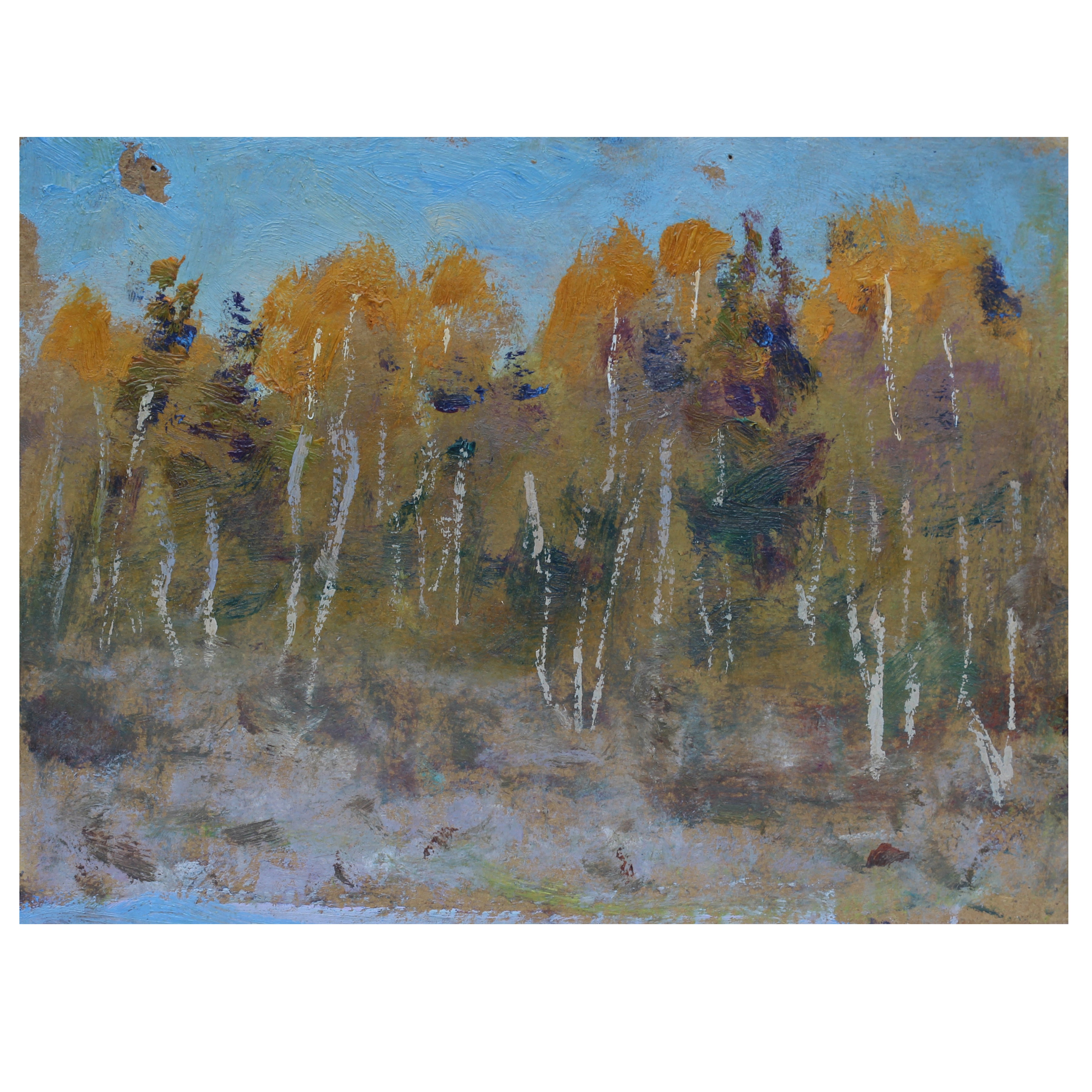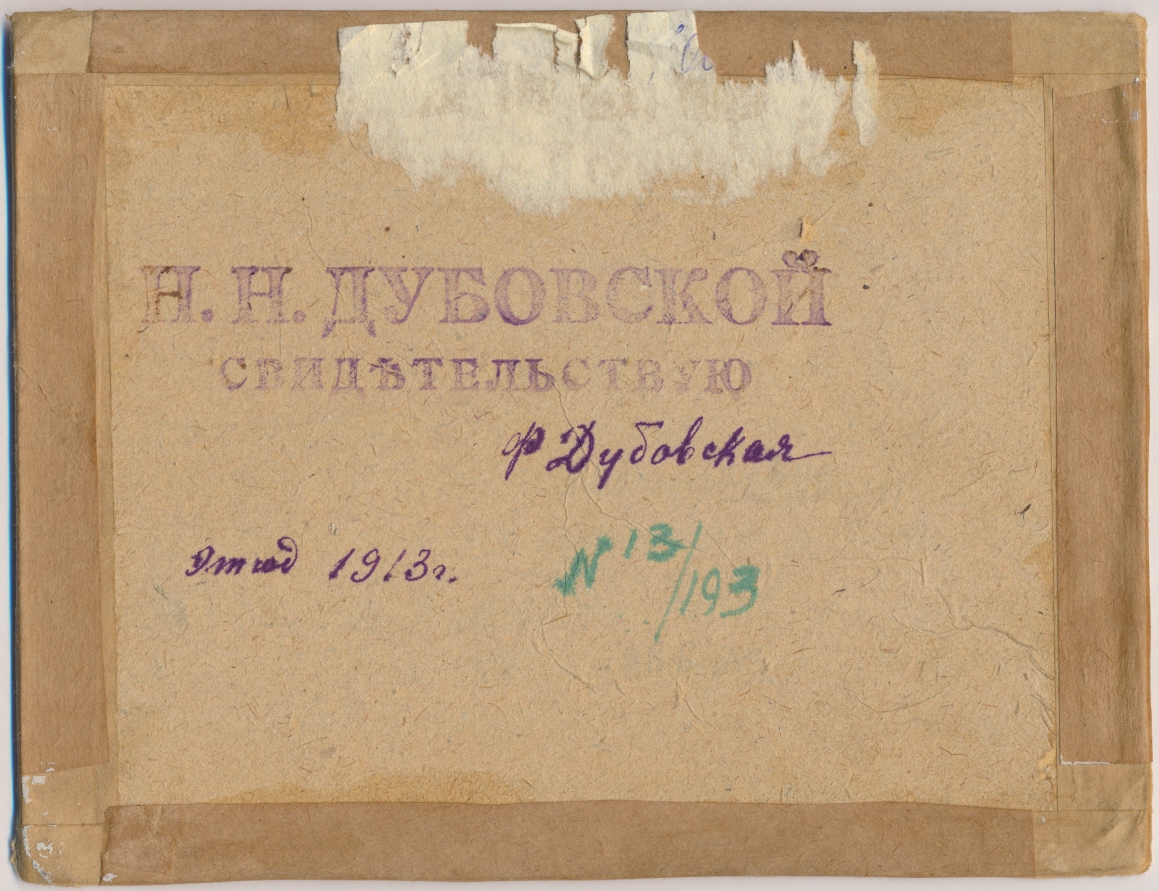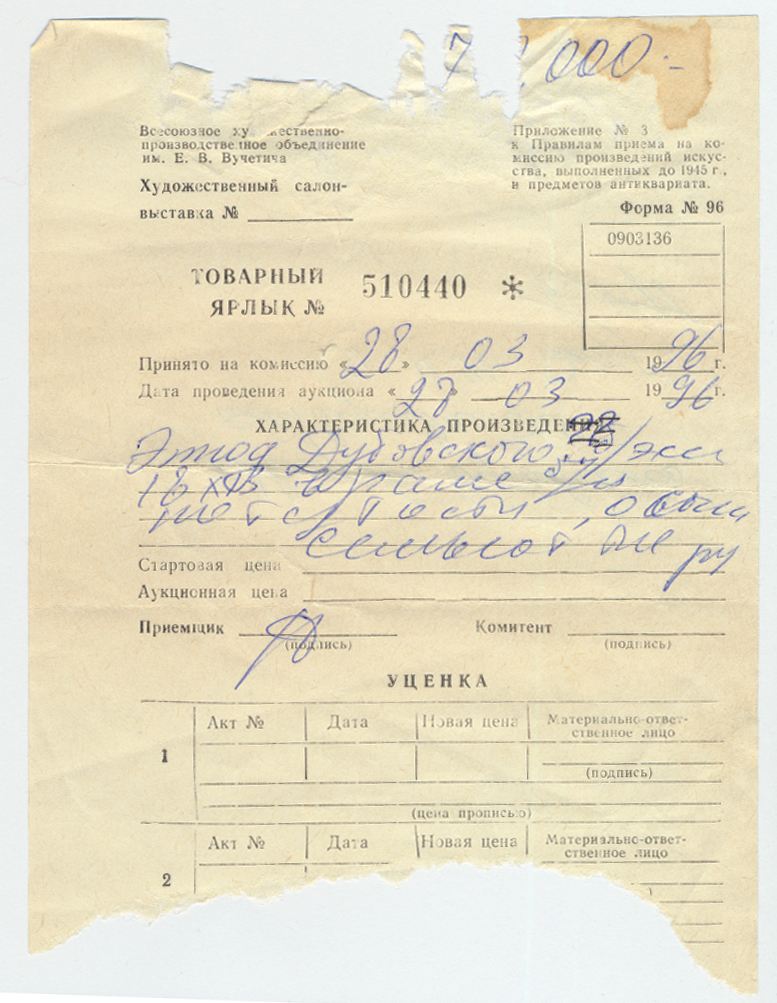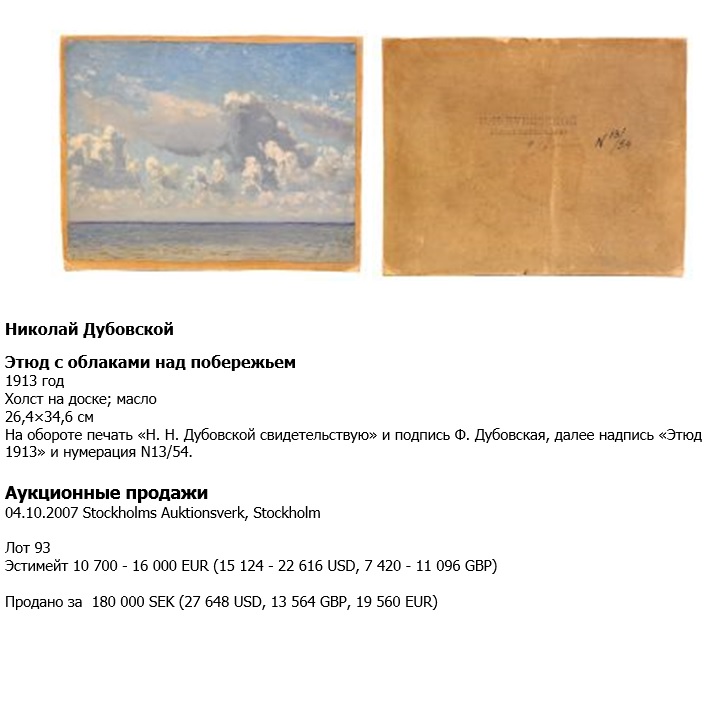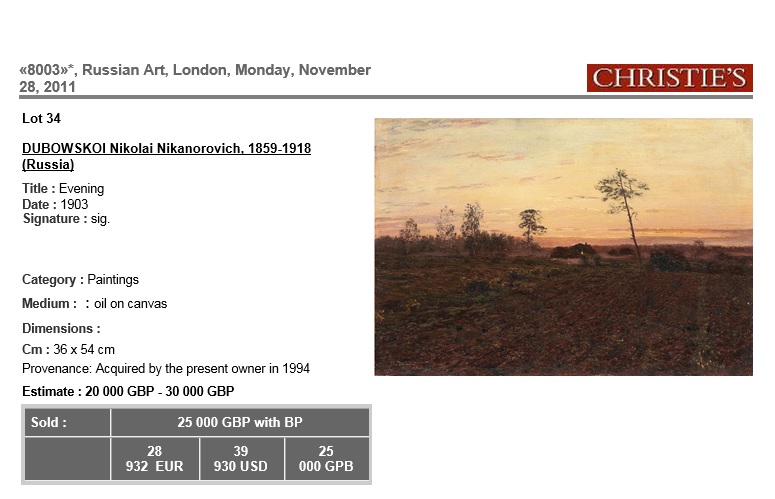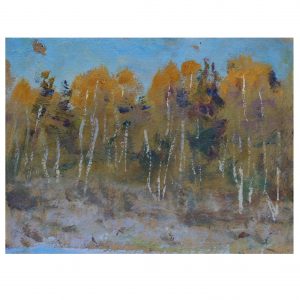DUBOVSKOY (DUBOVSKOI) Nikolay Nikanorovich
December 5, 1859 (Novocherkassk) — February 28, 1918 (Petrograd)
Painter, graphic artist
Nikolay Dubovskoy was born to hereditary Cossack family; his father headed the Don Cossack Host in Don Voisko Province. Dubovskoy studied in the Vladimir military gymnasium in Kiev (1872–1877); then he studied as a scholar of the Don Cossacks in the Imperial Academy of Arts (IAKh, 1877–1882). He studied in the class of landscape painting under the guidance of M. K. Clodt. In 1879 Dubovskoy was awarded the small silver medal. In 1880 he was awarded two big silver medals for his drawing from nature and the painting Swamp. In 1882 he left the Academy, and did not finish the course. In 1892 he obtained the certificate of the Imperial Academy of Arts with the right to teach drawing in schools and colleges.
Dubovskoy lived in St. Petersburg (Petrograd). He worked as a landscape painter, rarely painted portraits. In 1890s–1900s he traveled to the Don River, the Sea of Azov, the Volga River and the Caucasus. He often spent summer months in Sillamae on the Baltic Sea coast, drawing studies and sketches. Dubovskoy traveled through Europe a lot; he visited Italy (1892, 1895, 1897, and 1898), Greece (1892, 1894), Turkey (1893), Switzerland (1895, 1897, 1903, and 1908), France (1898), Germany (1912), the islands of the Greek archipelago and the Danube River (1892).
Since 1886 Dubovskoy participated in many exhibitions. He was a member and active participant of the exhibitions of the Society of Traveling Art Exhibitions (TPKhV, 1886–1918, with intervals; since 1895 — member of the council and the board of the Society), the Circle of Don Artists (1893–1914, with intervals), and the Society of South Russian Artists (1894). He also took part in the All-Russia industrial and agricultural exhibition in Nizhny Novgorod (1896), the International exhibitions in Munich (1897, 1909), the World exhibition in Rome (1911) and others. Dubovskoy was awarded the small silver medal at Paris World Fair (1900) for his paintings Calm, Monastery view, In the evening. He was also awarded the small gold medal at the International exhibition in Munich (1913) for his paintings Monastery near Moscow, Before the storm, The Black Sea.
In 1898 Dubovskoy was conferred the title of an academician for his good art reputation. Since 1897 he was often elected to the various committees and commissions under the Imperial Academy of Arts. In 1900 he became a member of the Imperial Academy of Arts; since 1908 — member of the council of the IAKh; since 1911 — head and professor of the landscape studio of the Higher Art Institute of Painting, Sculpture and Architecture (VKhU) under the IAKh. In 1910 he joined the A. I. Kuindzhi Society of Artists. He was one of the founders of the Union of Petrograd Art Workers.
Dubovskoy had a large collection of paintings and drawings by Russian painters, which he bequeathed to Novocherkassk Museum.
The retrospective exhibitions of the Dubovskoy were held in Leningrad (1938), in Novocherkassk (1946, 1947), and in Rostov-on-Don (1948, 1955).
Nikolay Dubovskoy was one of the most significant representatives of the Russian landscape school of the second half of the 19th — the beginning of the 20th century. He followed the traditions of the Itinerants. During early period of his art in 1880s, the artist painted small lyric landscapes. Later in 1890s he began to depict nature in monumental epic style. He was influenced by art of A. I. Kuindzhi. At the end of his life the artist was interested in impressionism.
Dubovskoy’s favorite motifs were winter landscapes, calm weather; he paid attention to the light effects in his artworks. Folk and romantic motifs were characteristic for his works.
Together with Isaac Levitan, he helped create what came to be known as the “Landscape of Mood”
Works by Nikolay Dubovskoy are in many museum collections, including the State Tretyakov Gallery, the State Russian Museum, Novocherkassk Museum of Don Cossack’s History in Novocherkassk, Rostov Regional Museum of Fine Arts in Rostov-on-Don and others.
